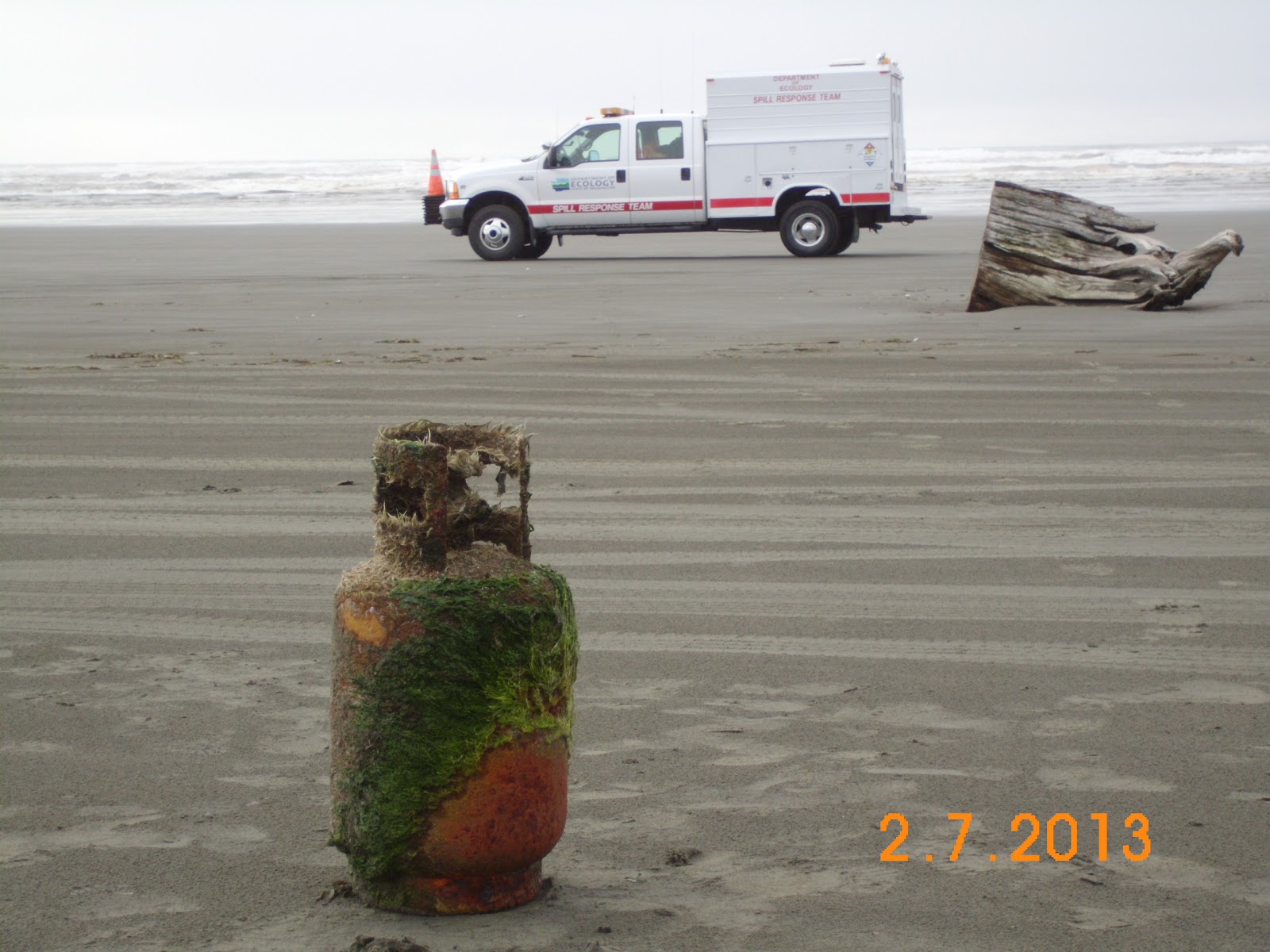It’s also important to report marine debris suspected to be from the March 11, 2011, Japan tsunami to NOAA at DisasterDebris@noaa.gov.
Precaution for volunteer cleanup efforts
This is really important because Washington relies heavily on the efforts of selfless, dedicated volunteers and citizen actions to help keep our beaches clean.
People are encouraged to do their part in cleaning up the increase in marine debris our coastal beaches are seeing. However, it’s important to look for specific hazard symbols and labels when you encounter debris to stay safe.
Ecology reports increased coastal field responses
Since Jan. 1, 2013, Ecology has received 8 reports of potentially hazardous items washing up on our coastal beaches, including gas cylinders, drums, and fuel containers.
In an average year, Ecology typically handles 6 to 10 such reports on coastal beaches.
The bottom line is if you encounter something on the beach and you’re not sure what it is, don’t move it or touch it – especially if you see any indication an item might be toxic, corrosive or flammable, contain an explosive, biohazard, or pose any other threat.
Let the professionals handle it instead.
Report potentially hazardous debris items
Call the state’s toll-free marine debris reporting hotline at 1-855-WACOAST (1-855-922-6278). Select “1” to speak to someone to report oil or hazardous debris.
People who call 1-855-WACOAST also can:
- Report large floating debris items that might pose a boating or navigation hazard by pressing "2."
- Leave a message about any other debris-related issues by pressing "3."
NOAA is the lead agency for predicting how marine debris is likely moving in the ocean, including debris from the tragic March 11, 2011 tsunami that struck Japan.
They are the best source for Japan tsunami marine debris information.


